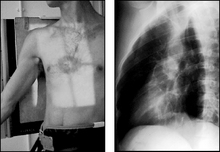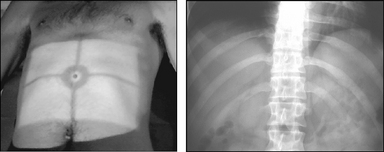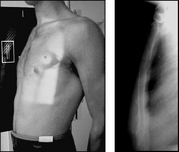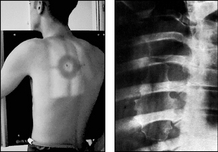3 Thoracic Cage
UPPER RIBS
Projection: RIGHT OR LEFT POSTERIOR OBLIQUES
Centring Point: In the mid-clavicular line of the side under examination – at level of the midpoint of the sternal body. Horizontal central ray
Centring Point: To a point in the midline midway between the xiphisternum and the lower costal margin
Points to consider
Technique
Radiological assessment
![]() Check each rib for # – it is rare to see displacement due to the numerous attached muscles
Check each rib for # – it is rare to see displacement due to the numerous attached muscles
![]() Oblique – ribs away from cassette will be foreshortened
Oblique – ribs away from cassette will be foreshortened
![]() Oblique – posterior rib articulations seen well on the raised side
Oblique – posterior rib articulations seen well on the raised side
![]() #s of ribs will unite spontaneously – treatment is limited
#s of ribs will unite spontaneously – treatment is limited
![]() Look for metastatic deposits – associated with rib destruction
Look for metastatic deposits – associated with rib destruction
STERNUM
Projection: ANTERIOR OBLIQUE (RAO)
Centring Point: To a point 8 cm lateral to the palpable fifth thoracic vertebra on the side furthest from the cassette. Horizontal central ray





